Introducing an agricultural breakthrough: Mango intercropping is the key to unlocking prosperity and doubling farmers’ income. In this blog post, we will explore the fascinating world of mango intercropping and provide valuable insights to help farmers thrive. Mango intercropping offers a sustainable solution with numerous benefits, including diversified income sources, risk mitigation, enhanced soil fertility, and efficient land utilization.
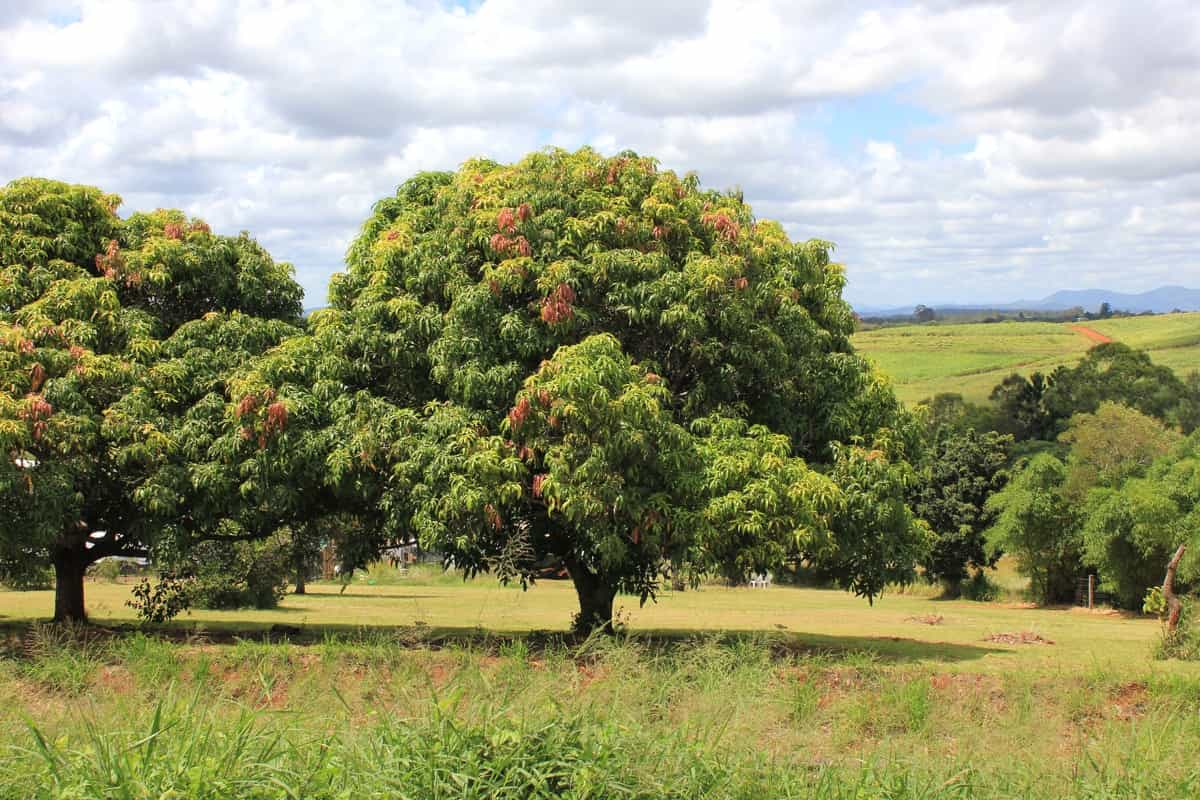
By carefully selecting complementary intercrops, implementing effective management practices, and adopting smart harvesting and marketing strategies, farmers can maximize their returns. Join us as we delve into the secrets of mastering mango intercropping and paving the way for a prosperous future in agriculture.
What is Mango Intercropping?
Mango intercropping is a farming practice that involves cultivating mango trees alongside other compatible crops. It is an innovative approach that promotes sustainable agriculture and maximizes land productivity. Farmers can secure a stable and higher revenue stream by diversifying income sources. According to research conducted by agricultural experts, mango intercropping has shown promising results.
In certain regions, farmers have reported an average increase of 30% to 50% in their overall income by adopting this method. The success of mango intercropping lies in selecting the right intercrops that complement the mango trees and optimizing resource utilization. This practice boosts soil fertility, helps in pest management, and reduces market risks. With its multiple benefits, mango intercropping is emerging as a game-changer for farmers, elevating their income potential while promoting sustainable agricultural practices.
Understanding Mango Intercropping
Growing two or more different kinds of mangoes simultaneously in the same plot of land is called “mango intercropping.” Intercropping in mango orchards is advantageous since it can increase the total crop production per unit area. Intercrops, which include vegetables, legumes, short-duration, and dwarf fruit crops such as papaya, guava, peach, plum, etc., can be produced in a location depending on the agro-climatic conditions in that area.
It was discovered that cultivating turmeric as an intercrop with mango trees not only helped reduce the number of trunk borers, termites, and gummosis-causing pathogens in the soil but also resulted in an increase in revenue due to the harvesting of the rhizomes produced by the plants.
In case you missed it: Key Rules to Get Rid of Fruit Fly in Mango: Symptoms, How to Treat, Management, Chemical, and Organic Control
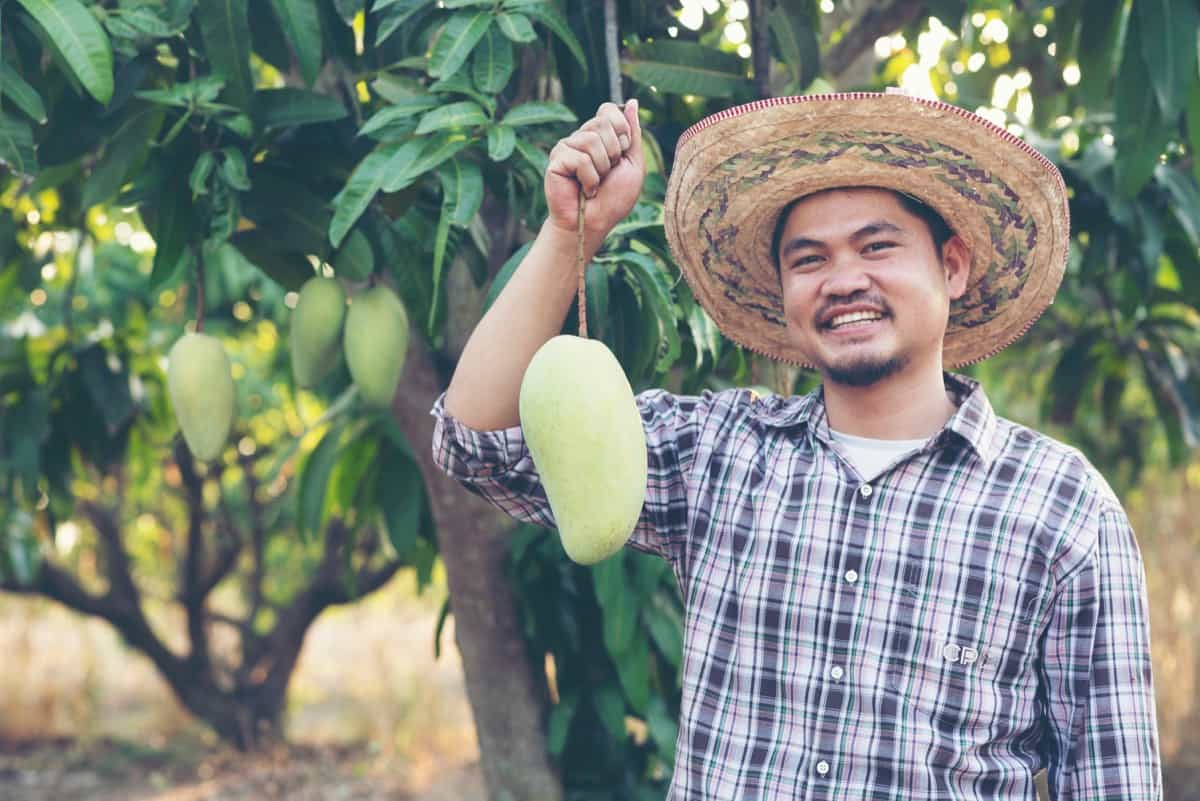
Benefits of Mango Intercropping
- Diversified Income Sources: Mango intercropping allows farmers to cultivate multiple crops simultaneously, providing additional revenue streams and reducing dependence on a single crop.
- Risk Mitigation: By diversifying their crops, farmers can mitigate the risks associated with market fluctuations, pests, diseases, and adverse weather conditions. If one crop faces challenges, the other intercrops can still generate income.
- Enhanced Soil Fertility: Mango intercropping promotes nutrient cycling and improves soil health. The intercrops help in nitrogen fixation, reduce soil erosion, and enhance soil organic matter content.
- Efficient Land Utilization: Intercropping optimizes land productivity by utilizing vertical space. Farmers can make their land by growing mango trees and other crops, maximizing yields per unit area.
- Improved Pest Management: Intercropping creates a more diverse and balanced ecosystem, reducing the risk of pest outbreaks. Beneficial insects attracted by intercrops can help control pests, reducing the need for chemical interventions.
- Reduced Environmental Impact: Mango intercropping reduces the need for excessive pesticide and fertilizer use, leading to a more sustainable farming system that benefits the environment.
- Crop Protection: The intercrops act as a natural barrier, shielding the mango trees from wind damage and providing shade, protecting them from excessive sunlight and temperature fluctuations.
- Market Advantage: Mango intercropping diversifies farmers’ product offerings, enabling them to cater to different market demands. This can lead to better market access and increased profitability.
- Climate Resilience: Intercropping can enhance the resilience of farming systems against climate change impacts by reducing vulnerability to extreme weather events and diversifying income sources.
Selecting the Ideal Intercrops Mango Intercropping
Maize: A fast-growing crop providing early income, while its tall plants provide shade to reduce evapotranspiration and preserve soil moisture. It also suppresses weeds, minimizing resource competition. Harvesting maize before mango tree maturity boosts additional income.
Legumes: Beans, peas, or lentils make excellent intercrops, enriching the soil through nitrogen fixation and improving fertility. Their symbiotic relationships with beneficial bacteria enhance soil health. Planting legumes optimizes land utilization, and their harvest contributes to sustainability and extra income.
In case you missed it: How to Start Alphonso Mango Farming in India: A Cultivation Guide to Planting to Harvesting
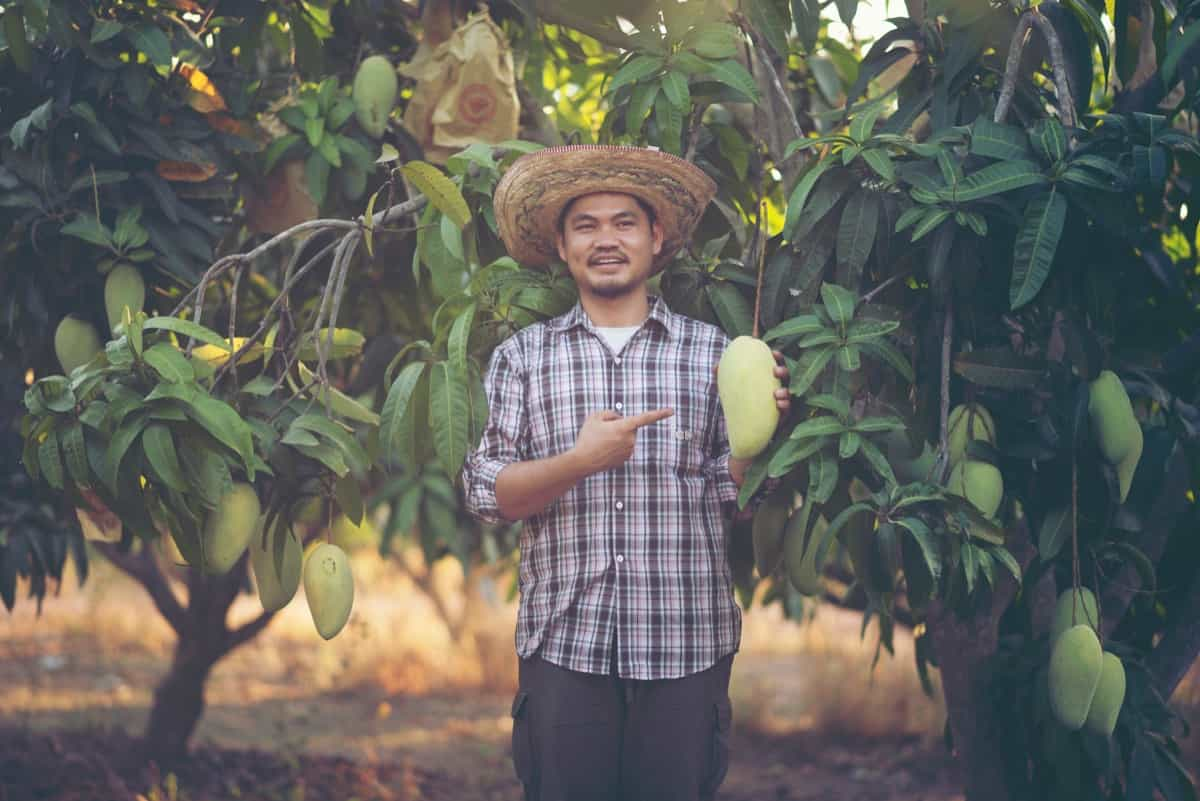
Pineapple: A compatible intercrop with dense foliage, pineapple suppresses weeds and conserves soil moisture, benefiting mango trees. It also acts as a high-value cash crop, increasing farmers’ income. The contrasting growth habits of mango and pineapple optimize resource usage. This intercropping model meets the demand for mangoes and pineapples, maximizing profitability.
Intercropping of Maize with Mango for Doubling Farmer’s Income
- Agroforestry is a land-use practice where woody perennials, crops, or animals are intentionally grown on the same land.
- Intercropping with major export cash crops like bananas, coffee, cocoa, coconuts, rubber, and oil palms has been a focus in agroforestry.
- Mango and Teak are potential components in agroforestry systems, especially in tropical traditional home gardens.
- Intercropping maize with mango improves soil fertility and reduces soil erosion in the surrounding area.
- This intercropping combination is recommended for maximizing and doubling the farmer’s income.
- Agroforestry models promote increased land utilization in farmers’ fields and contribute to livelihood security and environmental resilience.
- Agroforestry systems combine food and animal production with tree growth.
- India has a vast potential for agroforestry expansion, contributing to output augmentation and stabilization.
- Intercropping in agroforestry can restore soil quality, support dryland crops, and provide commercial and forest goods.
- Indigenous tribes in Brazil’s Amazonian woods use trees to diversify their agriculture and benefit from sustainable management practices.
- Selecting suitable tree species is crucial for the viability of agroforestry systems.
- Legume species like Stryphnodendron guianensis positively affect forage production and soil productivity.
- Mango orchards exhibit lower efficiency compared to other fruit crops, so intercropping can generate additional income and improve soil health.
- Intercropping systems with mango in irrigated conditions have shown positive results.
- Mango is adaptable to cultivation and has multiple uses, including fruit, medicine, fodder, timber, and shade.
- Maize intercropping with mango provides extra income from mango fruits, improved soil fertility, reduced erosion, and better nutrient cycling.
- Agroforestry models show higher biomass, yield, and economic output than maize monoculture.
- Different intercropping systems with mango have been studied, and combinations like mango + pigeon pea + tomato and mango + cowpea-Bengal gram have shown high net returns.
In case you missed it: How to Start Kesar Mango Farming: A Cultivation Guide to Planting to Harvesting
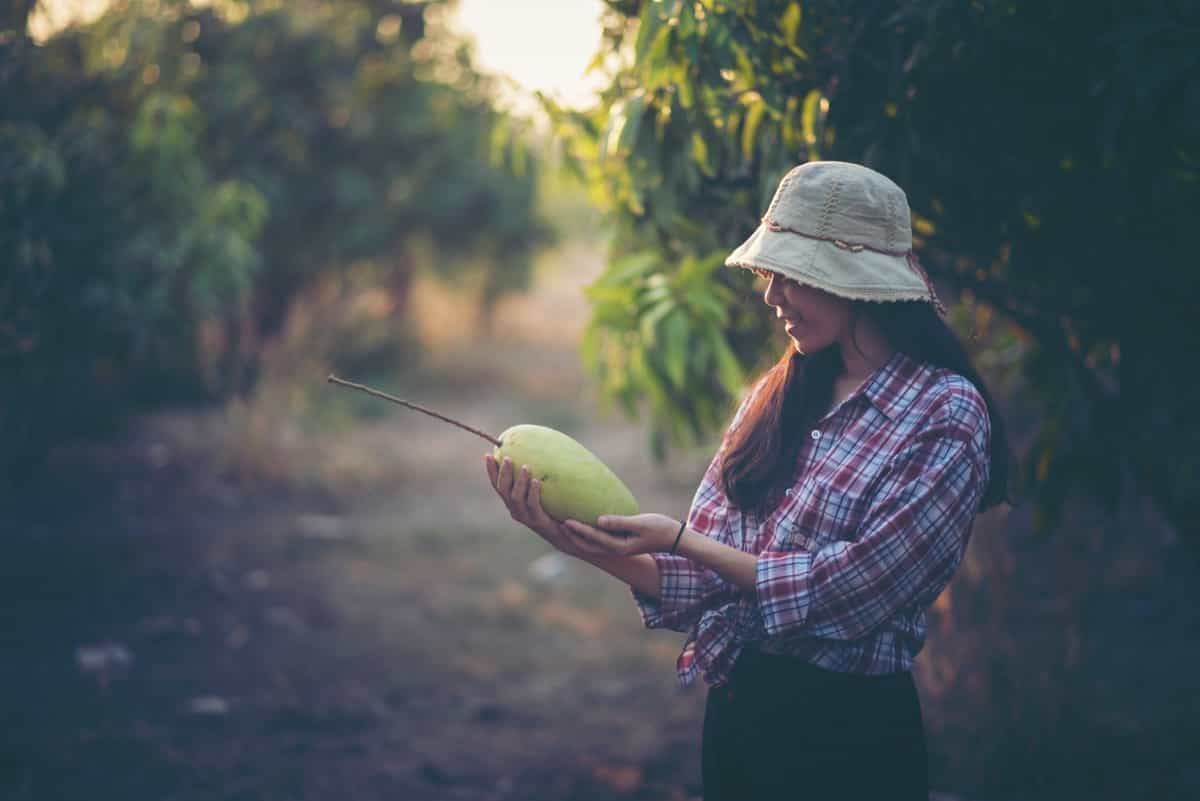
Intercropping of Legumes with Mango for Doubling Farmer’s Income
- Intercropping in fruit orchards offers various benefits, such as increased productivity and reduced fruit drop. Legumes are particularly suitable as intercrops due to their high protein content, providing cost savings in livestock nutrition.
- Mango cultivation provides intercropping opportunities during the initial years, allowing farmers to utilize space efficiently, generate extra income, and improve soil properties. Forage intercropping combines crop and livestock production, ensuring profitability.
- Intercropping can be implemented in a row, mixed, relay, or strip system, each with its characteristics and advantages. These systems help farmers diversify their crops, increase land productivity, and improve nutrient utilization.
- When legumes are intercropped with fruits, numerous benefits exist, including enhanced resource capture, soil microbial activity, and nutrient absorption. This leads to higher biomass production, improved nutrient concentration, and increased economic returns.
- Legume intercrops thrive even in the shade of fruit trees, although there may be a slight reduction in biomass and yield due to reduced sunlight. However, this does not negatively affect fruit trees’ growth, flowering, fruiting, or yield.
- Intercropping vegetable crops under fruit orchards may result in a slight reduction in yield, but proper orchard management improves overall productivity and extends the productive life of fruit trees.
Mango and Pineapple Intercropping Model for Doubling Farmer’s Income
- Mango and pineapple intercropping is an effective model that can significantly increase farmers’ income. Pineapple (Ananas comosus), belonging to the Bromeliaceae family, is a perennial fruit crop primarily grown in tropical and subtropical regions worldwide. It originated in the Parana-Paraguay basin and was domesticated by the Tupi-Guarani Indians, who named it “ananas” to signify its excellent fruit quality.
- Pineapple is rich in Vitamin C and also contains vitamins A and B. It was introduced to India around 1558 and is currently produced in Thailand, the Philippines, Hawaii, Brazil, Indonesia, Mexico, Taiwan, South Africa, Australia, China, Nigeria, Colombia, and India. In India, major pineapple producers are Assam, West Bengal, Tripura, Kerala, Goa, Odisha, Bihar, Manipur, Karnataka, and Meghalaya.
- Pineapple is an herbaceous perennial plant that grows to a height of 1.0 to 1.2 meters and has a diameter of 1.3 to 1.5 meters. Similar to bananas, it is monocarpic, meaning each stems flowers only once and dies after fruiting.
- Once planted, pineapple plants can live up to 50 years. These plants are well-suited for xerophytic conditions as their leaves have trichomes on the lower epidermis, which absorb water from the atmosphere and reduce transpiration. The stem is narrow at the base and wider at the top, reaching a length of 20-30 cm.
- The plant produces 70-80 leaves before inducing blooming, usually between 6 to 16 months after planting. The time from planting to inflorescence formation depends on factors like propagule size, planting date, climate, and soil conditions.
- The fruit is a multiple fruits, formed by the thickening of the inflorescence axis and the fusion of small, berry-like fruits produced by each flower. Typically, 100-200 individual fruits are spirally arranged around the axis, forming a broad, almost cylindrical fruit.
- The average size of a pineapple fruit is 20 cm long and 14 cm broad, tapering towards the top where it is mounted by a rosette of short, stiff, spirally arranged leaves known as the crown.
- Various pineapple cultivars exist, categorized into five major groups based on their characteristics. Some popular cultivars include Red Spanish, Singapore Spanish, Queen, MacGregor, Perola, Smooth Cayenne, and Manipure.
- However, these groups do not mention certain popular varieties like Giant Kew, Kew, Mauritius, Jhaldjupshould beakhat grown in India.
- Pineapple cultivation requires a tropical climate but can also thrive in subtropical regions. Frost is detrimental to pineapple, limiting its cultivation to latitudes between 25° N and S, with exceptions like Assam (30° N) and Port Elizabeth (33° S) in South Africa.
- Pineapple’s optimal day and night temperatures are around 30°C and 20°C, respectively. Leaves and roots grow best at 32°C and 29°C, respectively. Growth ceases below 20°C and above 36°C.
- Pineapple thrives in sunny climates, but specific figures for solar radiation requirements are unavailable. In India, commercial pineapple cultivation occurs in Assam, West Bengal, Bihar, Coastal Andhra Pradesh, Kerala, Karnataka, Odisha, Goa, Tripura, Meghalaya, and Tamil Nadu.
- The average annual rainfall requirement ranges from 1000 mm to 1500 mm. In low rainfall areas, successful production necessitates good distribution of rainfall and water conservation management practices.
In case you missed it: Totapuri Mango Farming in India: A Complete Cultivation Guide to Planting to Harvesting
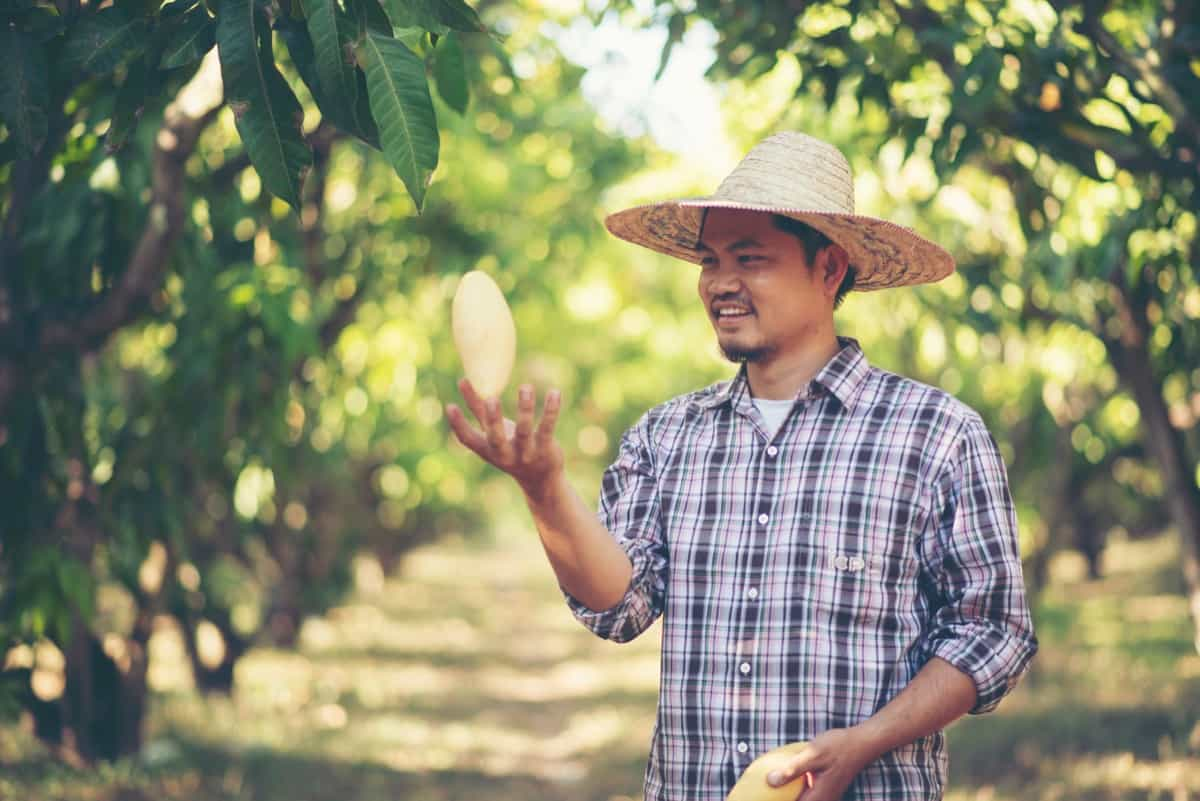
Implementing Effective Management Practices for Mango Intercropping
- Mango intercropping is beneficial for farmers, increasing their income and crop diversity.
- Implementing effective management practices ensures successful mango intercropping.
- Plant mango trees with compatible crops such as legumes, vegetables, or spices.
- Provide proper spacing between mango trees and intercrops to avoid competition for resources.
- Regularly monitor and control pests and diseases through integrated pest management techniques.
- Use organic fertilizers and compost to maintain soil fertility and promote healthy growth.
- Prune mango trees to control their size and shape, improving sunlight penetration and air circulation.
- Implement efficient irrigation methods, such as drip irrigation, to conserve water and provide adequate moisture.
- Regularly remove weeds to minimize competition and nutrient loss.
- Conduct regular soil testing to assess nutrient levels and apply appropriate fertilizers accordingly.
- Train and educate farmers on best practices for mango intercropping through workshops and extension services.
Harvesting and Marketing Strategies for Mango Intercropping
- Timing: Harvest mangoes when fully ripe to ensure maximum sweetness and flavor.
- Sorting: Sort mangoes based on size, color, and quality to meet market demands.
- Packaging: Use appropriate packaging materials, such as boxes or crates, to protect mangoes during transportation and maintain freshness.
- Grading: Grade mangoes based on quality parameters, including size, shape, and blemishes, to offer uniform products to the market.
- Storage: Store mangoes in cool, well-ventilated facilities to extend their shelf life.
- Transportation: Arrange efficient transportation to deliver mangoes to marketplaces and minimize handling damage.
- Market analysis: Conduct market research to understand consumer preferences, demand trends, and pricing strategies.
- Marketing channels: Identify suitable marketing channels, such as wholesale markets, retailers, or direct sales, to reach target customers.
In case you missed it: Banganapalli Mango Farming in India: A Guide to Planting, Care, Pests and Disease Management
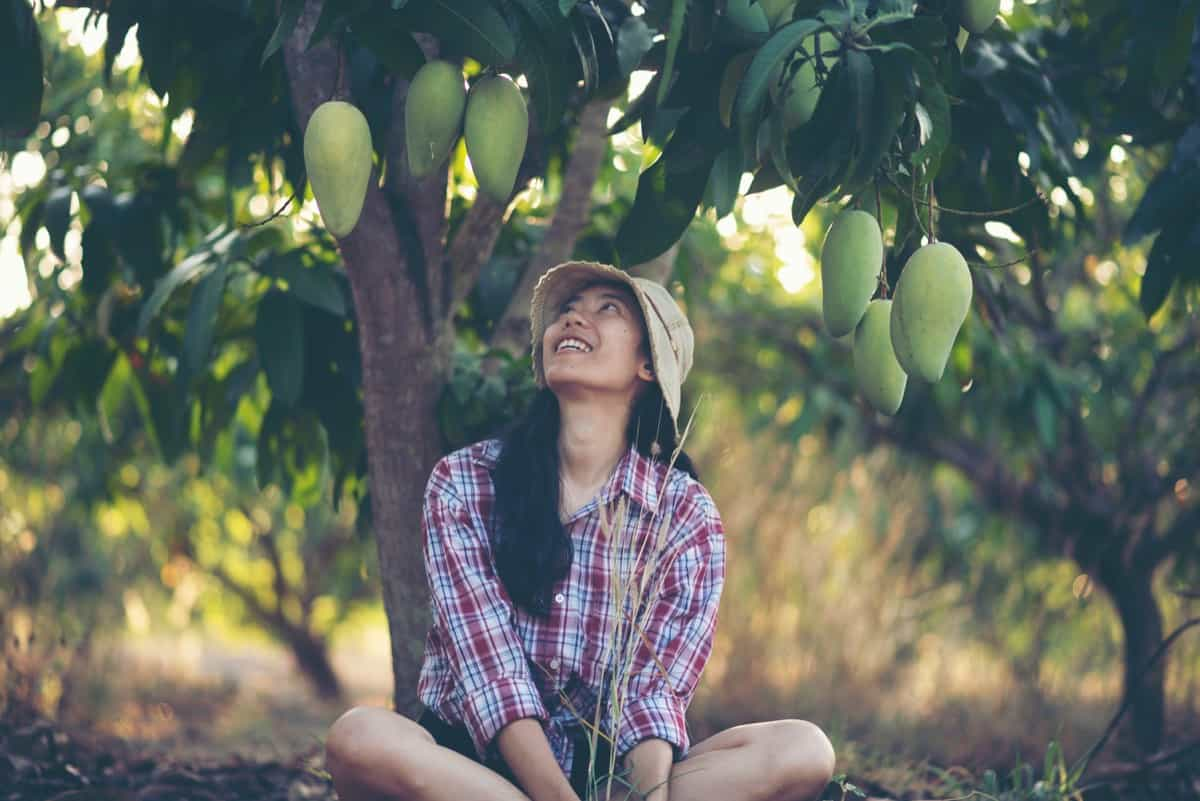
Conclusion
Unlocking prosperity through mastering mango intercropping holds immense potential for doubling farmers’ income. By implementing effective harvesting and marketing strategies, farmers can capitalize on the demand for mature and high-quality mango fruits, thus maximizing their profitability and achieving economic growth in the agricultural sector.
- Types of Pesticides Used in Agriculture: A Beginner’s Guide
- Economical Aquaculture: A Guide to Low-Budget Fish Farming
- 15 Common Planting Errors That Can Doom Your Fruit Trees
- How to Make Houseplants Bushy: Effective Tips and Ideas
- Innovative Strategies for Boosting Coconut Pollination and Yield
- Pollination Strategies for Maximum Pumpkin Yield
- The Complete Guide to Chicken Fattening: Strategies for Maximum Growth
- Natural Solutions for Tulip Problems: 100% Effective Remedies for Leaf and Bulb-Related Issues
- Revolutionizing Citrus Preservation: Towards a Healthier, Greener Future
- Natural Solutions for Peony Leaf and Flower Problems: 100% Effective Remedies
- Maximizing Profits with Avocado Contract Farming in India: A Comprehensive Guide
- Natural Solutions for Hydrangea Problems: 100% Effective Remedies for Leaf and Flowers
- The Ultimate Guide to Choosing the Perfect Foliage Friend: Bringing Life Indoors
- From Sunlight to Sustainability: 15 Ways to Use Solar Technology in Agriculture
- The Ultimate Guide to Dong Tao Chicken: Exploring from History to Raising
- The Eco-Friendly Makeover: How to Convert Your Unused Swimming Pool into a Fish Pond
- Mastering the Art of Delaware Chicken Farming: Essentials for Healthy Backyard Flocks
- 20 Best Homemade Fertilizers for Money Plant: DIY Recipes and Application Methods
- How to Craft a Comprehensive Free-Range Chicken Farming Business Plan
- Brighten Your Flock: Raising Easter Egger Chickens for Beauty and Bounty
- How to Optimize Your Poultry Egg Farm Business Plan with These Strategies
- Subsidy for Spirulina Cultivation: How Indian Government Schemes Encouraging Spirulina Farmers
- Ultimate Guide to Raising Dominique Chickens: Breeding, Feeding, Egg-Production, and Care
- Mastering the Art of Raising Jersey Giant Chickens: Care, Feeding, and More
- Ultimate Guide to Raising Legbar Chickens: Breeding, Farming Practices, Diet, Egg-Production
- How to Raise Welsummer Chickens: A Comprehensive Guide for Beginners
- How to Protect Indoor Plants in Winter: A Comprehensive Guide
- Ultimate Guide to Grow Bag Gardening: Tips, Tricks, and Planting Ideas for Urban Gardeners
- Guide to Lotus Cultivation: How to Propagate, Plant, Grow, Care, Cost, and Profit
- Agriculture Drone Subsidy Scheme: Government Kisan Subsidy, License, and How to Apply Online
- Ultimate Guide to Raising Araucana Chickens: Breed Profile, Farming Economics, Diet, and Care
- Bringing Hydroponics to Classroom: Importance, Benefits of Learning for School Students
- Ultimate Guide to Raising Polish Chickens: Breed Profile, Farming Economics, Diet, and Care
- Ultimate Guide to Raising Australorp Chickens: Profile, Farming Economics, Egg Production, Diet, and Care
- Silkie Chicken Farming: Raising Practices, Varieties, Egg Production, Diet, and Care
- Sussex Chicken Farming: Raising Practices, Varieties, Egg Production, Diet and Care